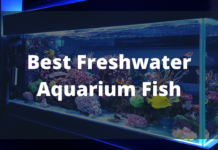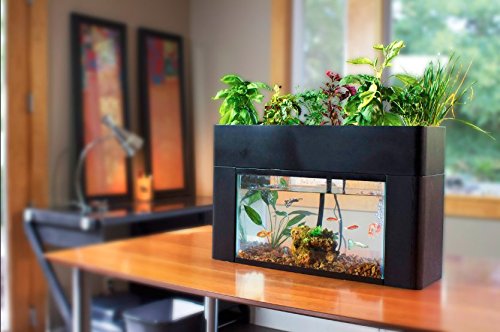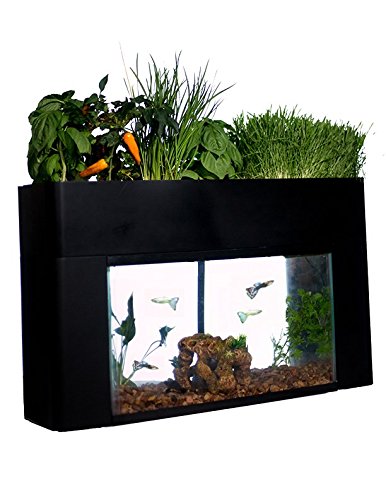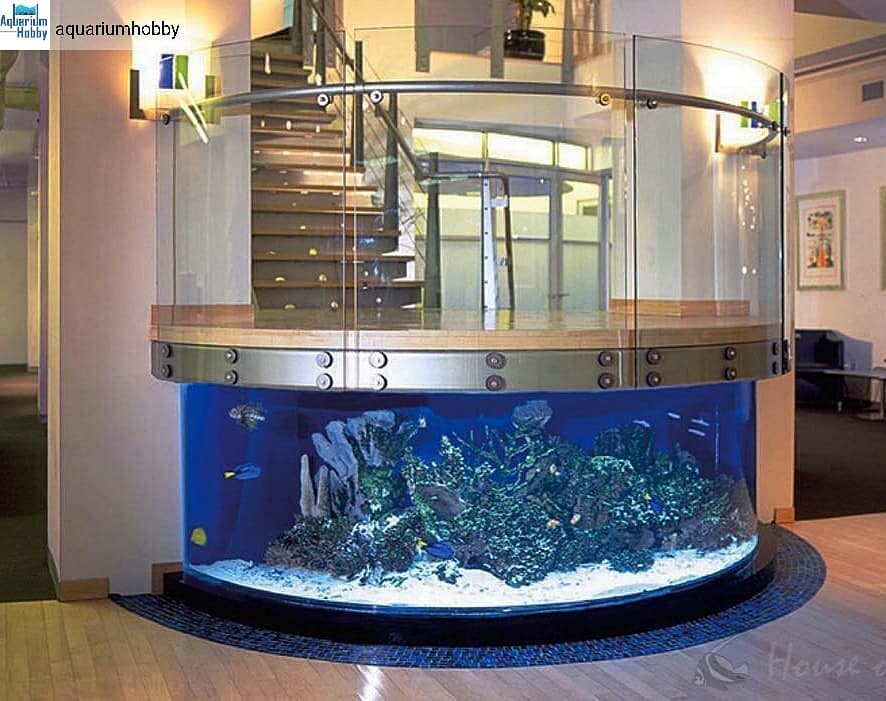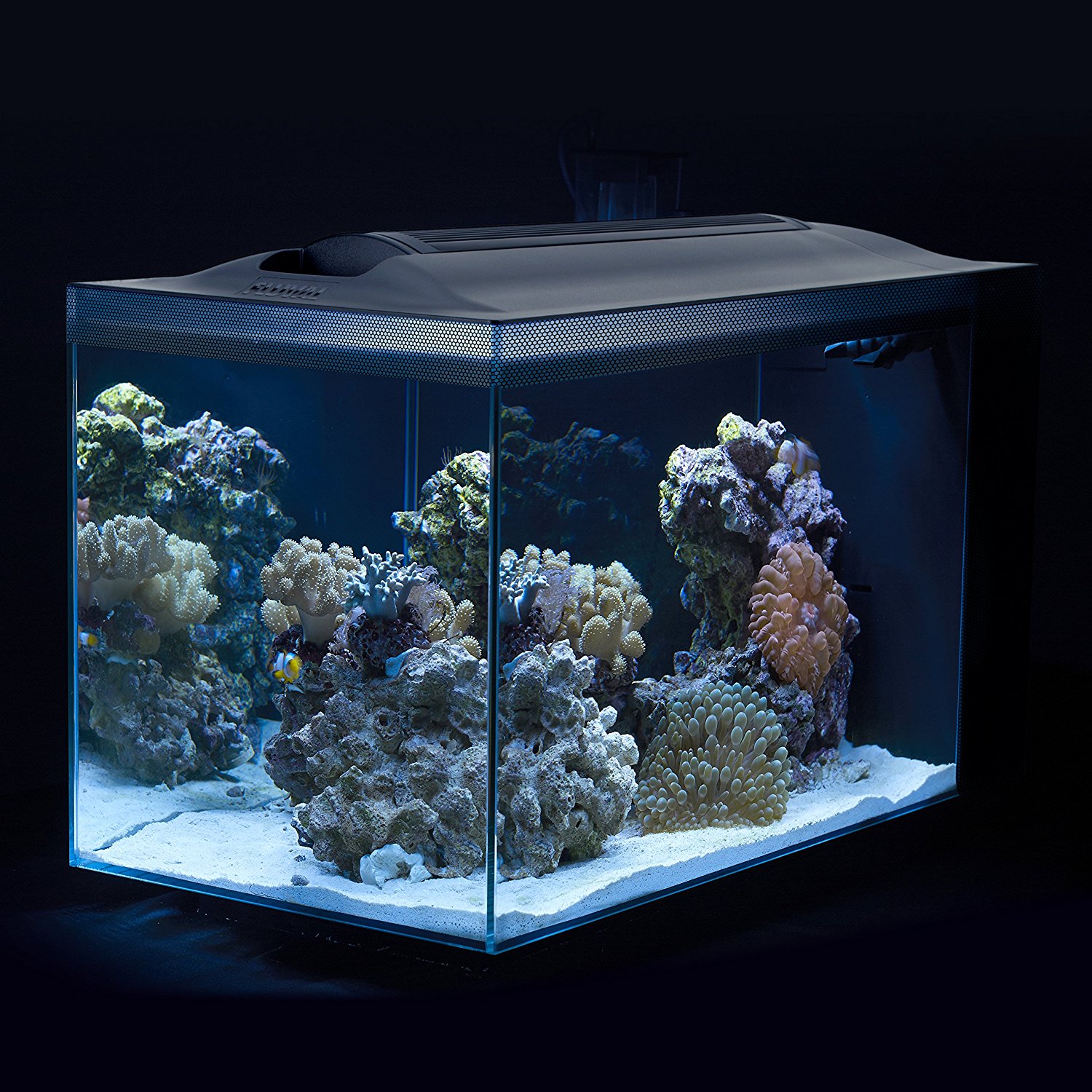So You Are Thinking About Owning an Aquarium…
Great! Aquarium ownership can be an incredibly rewarding experience. Not to mention a great learning experience. Being part of the aquarium community brings you into a hobby that dates back thousands of years. Records show people owning fish for enjoyment as far back as ancient Rome and follows to the history of fish tanks in eighteenth century London. See our aquarium history page for further information on the history of the hobby.
Getting started is simple. All you need is a couple of starter equipment, an aquarium guide, and a creative imagination. Below we detail the different types of aquariums, equipment you will need, along with the first steps in starting up an aquarium. Then we will go on to provide a general guide for lifelong aquarium ownership for many years of enjoyment and learning to come. We are glad you are considering the aquarium hobby and welcome you as a member of the greater aquarium hobbyist community.
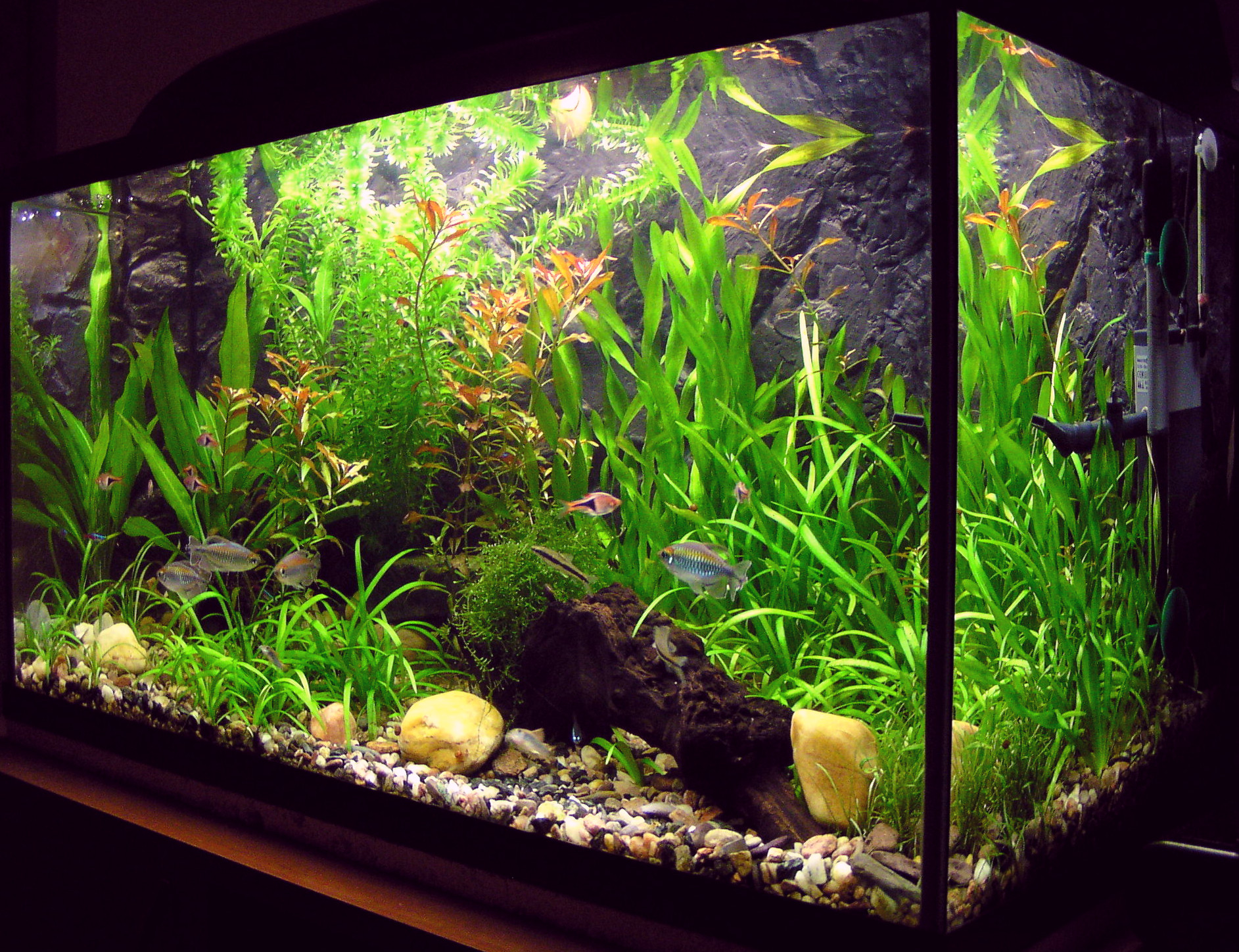
If you are in a rush Here’s the short version! (Getting Quick start) and aquaponics
Insert link here (10 Steps to setup)
Choosing Between Salt or Freshwater Aquariums
There are two main categories of aquariums, Saltwater and Freshwater. Saltwater aquariums mimic the ecosystems found in the oceans and other saltwater bodies of water on earth. Most commonly they include corals and reef dwelling fish and invertebrates like shrimp. These aquariums can be stunning and the varieties of saltwater fish have amazing patterns and colors. Saltwater aquariums are more complex than freshwater aquariums due to the dynamic environment they attempt to mimic. The oceans water parameters are match in an aquarium using various equipment including protein skimmers, ultraviolet lights, heaters, sump filters, and this list goes on. When starting, most aquarium beginners choose freshwater due to the lesser amount of equipment and cost of inhabitants as compared to saltwater. This is not to dissuade anyone from owning a saltwater, just as a introduction to the aquarium hobby.
Many advanced aquarium owners are freshwater aquarium experts that breed rare fish including cichlids, plecos, and angelfish found in few fish stores. When choosing between saltwater and freshwater it depends on the expertise available and the amount of money that you are willing to spend when setting up the aquarium. In general, saltwater aquariums and fish are more expensive than freshwater aquariums and fish. Even though it is easily possible to spend lots of money on freshwater aquariums and fish. In the end no matter the type of aquarium you choose as long as you seek out expert advice and use the right products the end result will be a beautiful aquarium.
Getting Started:
Now that you have decided to go with either saltwater or freshwater, we will provide a guide on what aquariums to check out and the equipment you will need. This article focuses on freshwater aquariums and advice relating to those aquariums. This includes tropical aquariums, coldwater (Goldfish) aquariums, and aquaponic aquariums.
Picking an Aquarium:
Considering where to place an aquarium is important to both the aesthetics of the room and the environment it will create for the aquarium inhabitants. Direct sunlight should be avoided to prevent the growth of excess algae. Spaces by entrances and where there is a draft should be avoided as temperature swings can negatively affect the aquarium. Size is important to consider. Since a gallon of water weighs more than 8 pounds, aquariums even modest ones can be very heavy. A 30 gallon tank for example can weight over 250 pounds once filled. Therefore the tank stand or table that is holding the aquarium should be able to carry the amount of weight that the filled tank is expected to weigh.
Finally, aquariums are for enjoyment and discovery. It is important for them to be in a place where they can be appreciated and viewed with ease. Commonly placed at eye level allows them to be viewed while standing. Others are placed in view of a seated audience. Either way it is important to consider how the aquarium will appear to its audience.
First thing needed is an aquarium.
Once you have chosen a place for your aquarium you must choose a size. Most beginners start with aquariums between 1 and 100 gallons. We recommend choosing a 10 to 30 gallon aquarium as this size is easy to maneuver into place and can maintain themselves as they create a self-sustaining ecosystem. Tanks below 10 gallons tend to be susceptible to water parameter fluctuations during water changes which can harm fish and plants in the aquarium. In the end the choice depends on your budget and the space you have for an aquarium.
For more information about the best aquariums to choose from check out our article:
What’s Inside?
Now that you have decided on an aquarium you can start to plan out what you will keep in it. This will play an important role in deciding what equipment and environment you need for the aquarium. For example, if you are keeping Fancy Goldfish you will not need a heater as you would with tropical aquarium fish like guppies. Also, Goldfish do better with artificial plants or very hardy plants as they like to uproot live plants and pick at them until they die.
Choosing between what species of fish you will keep will determine what is inside your fish tank. We recommend checking out our top 10 fish for beginners list to guide you in this decision. This will help narrow down some of your options.
Once you decide on what you are going to keep in your aquarium you can start picking the gravel, decorations, and other equipment you will need to keep your aquarium running smoothly.
Goldfish (Coldwater) Tank

For a goldfish tank with artificial plants you will need:
- Large gravel, preferably large round pebbles: Check out substrate/gravel here
- Lighting: Standard LED Check out the top LED lighting here
- Decorations: Large Artificial plants, Wood, or Rocks for hiding spots
- Filter: Strong filter as goldfish produce a lot of waste: Check out the top filters here
Tropical (Freshwater) Tank With Artificial Plants

For tropical fish with artificial plants you will need the following:
- Substrate: fine gravel to medium size, (see the best aquarium gravel here)
- Lighting: Standard LED, (see the best aquarium lighting here)
- Decorations: Artificial plants, wood, rocks to suit a natural looking environment (Check out artificial plants, wood, and rocks here)
- Filter: Standard Filter matched to aquarium size: (See Top Filters for more details)
- Heater: Heater to maintain tropical water temperature: (Check out heaters here)
Tropical (Freshwater) Aquarium With Live Plants
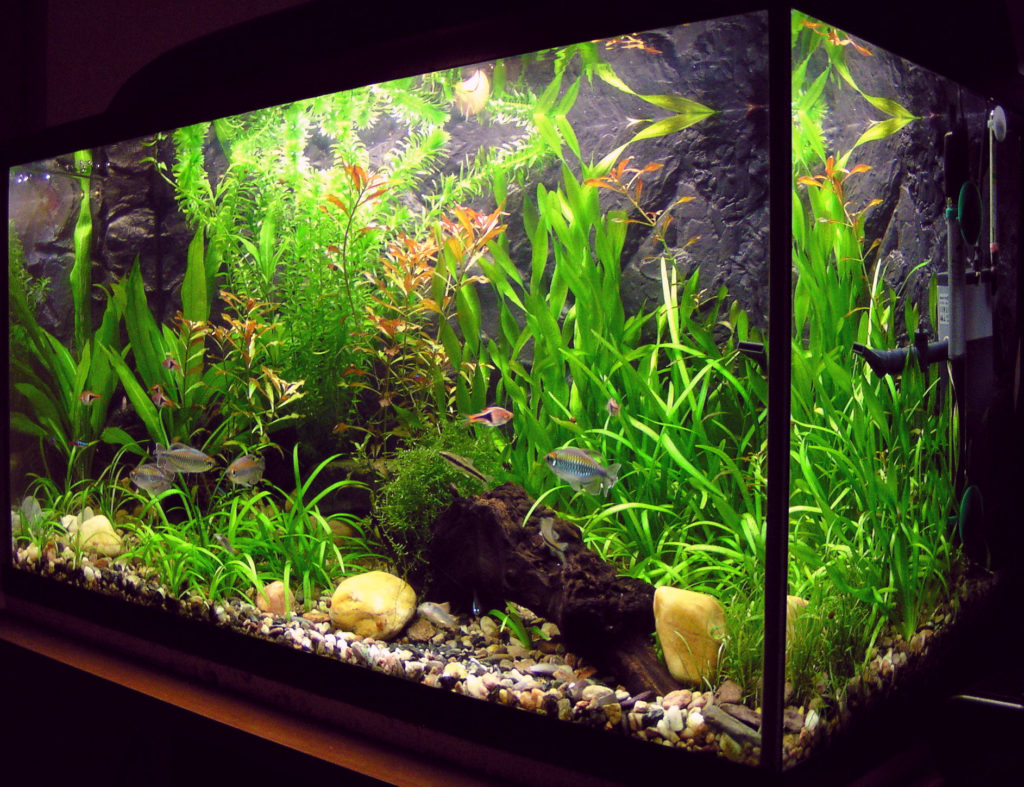
For a tropical fish tank with live plants you will need:
- Substrate: fine gravel optimized with plant substrate: (see the best aquarium gravel here)
- Lighting: Plant optimized LEDs (See here on Amazon.com) and our general aquarium lighting here
- Decorations: live plants, wood, rocks to suit a natural looking environment
- Filter: Standard Filter matched to aquarium size: (See Top Filters for more details)
- Heater: Heater to maintain tropical water temperature: (Check out heaters here)
Filling the Aquarium:
Now that you have placed all the equipment in the aquarium, being sure to give everything a quick rinse in cold water without any detergents or soaps, it is time to fill the tank with water. Being sure to use your trusty aquarium bucket (Check out buckets on Amazon here). Begin to slowly fill the aquarium. Often it’s best to fill the aquarium then organize the decorations as they will move as the tank is filled with water. Another tip is to use a smaller container to fill the aquarium from the bucket.
Now that the aquarium is filled you must add chemicals to neutralize any toxins in the water that could harm fish. This includes chlorine, which is added to household drinking water for bacterial neutralization, but is toxic to fish. A water purifying product can do the job quite well (Check out our article on these and other helpful chemicals for your aquarium). All you need is to follow the provided instructions on dosing the aquarium.
Now it is time to cycle the aquarium!
Conclusion
Starting an aquarium can be a rewarding learning experience. Ensuring that the right equipment is used and set up properly will guarantee years of happy aquarium ownership to come. Continue reading for articles about best beginner fish, live plants, and other ways to keep you aquarium looking it’s best.


